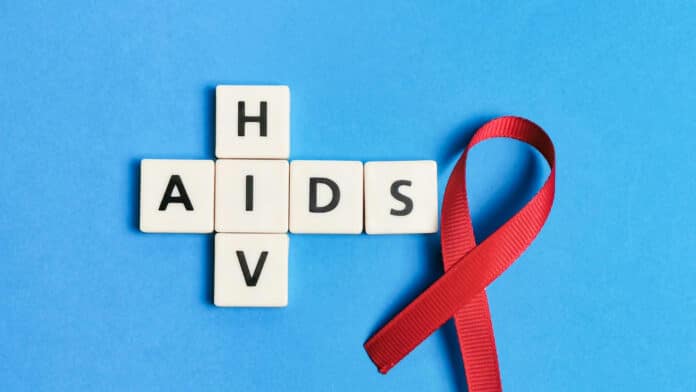Researchers have been exploring innovative approaches to improve HIV therapy, and one promising avenue is the development of a new hydrogel. This new study from the Johns Hopkins University investigates the potential of this hydrogel to enhance the convenience and effectiveness of HIV treatment.
The resulting gel gradually dispenses a consistent amount of the anti-HIV medication, lamivudine, for six weeks. This breakthrough suggests the possibility of a novel therapy for individuals living with HIV, eliminating the need for a daily pill regimen to safeguard against AIDS.
Honggang Cui, a Johns Hopkins University chemical and biomolecular engineer who led the research, said, “The primary challenge in HIV treatment is the need for lifelong management of the virus, and one way to address this is to reduce dosing frequencies to help patients stick to medical regimens. This new molecular design shows us a future in which drug hydrogelation can do that to improve HIV treatment.”
Cui’s team found that the gel quickly breaks into lamivudine molecules in lab tests mimicking blood’s liquid part. When injected into mice, one shot was enough to maintain adequate drug levels for 42 days without causing many side effects.
“Our aim is to make people’s lives better,” Cui explained. “We can inject this antiviral substance under the skin and let it stay there for a long time, releasing the medicine slowly and steadily. This is crucial for people with HIV.”
For those with HIV, keeping the right amount of medicine in the bloodstream is vital to control the virus. Traditional methods struggle with this because the body naturally gets rid of these drugs. That’s why different treatments need various doses and schedules to work.
The researchers plan to test their approach with medicines used in combination therapies and lamivudine. Since the FDA approves lamivudine for HIV and hepatitis B, the gel could also help manage hepatitis B.
Co-author Charles W. Flexner, a professor of medicine, pharmacology, and molecular sciences at the Johns Hopkins School of Medicine, said, “This is a novel way to deliver anti-HIV meds, and this platform has the advantage that a single polymer can be programmed to deliver several different drugs simultaneously. “One of the drawbacks of the approved injectable HIV treatments is that none have activity against the hepatitis B virus, which is a common co-infection with HIV, especially in Asia and Africa. This formulation delivers lamivudine, a drug active against both HIV and HBV. However, it can also be modified to provide tenofovir, the current standard of care for HBV treatment.”
In the future, the team hopes their hydrogel can be used as a prevention method, like how some people take anti-HIV drugs to avoid getting infected.
“Keeping high drug levels in the bloodstream for 42 days is very impressive,” Cui mentioned. “But we aim for even longer periods.”
Hydrogels are unique because they can absorb water and feel like jelly, much like our body’s tissues. This new gel forms on its stays near the injection site and turns into molecules that can fight the virus without needing extra stuff to carry the medicine.
“The most exciting thing about these gel strands is that they’re made entirely of the medicine itself,” Cui explained. “Everything comes from the same substance after injection, and this simple way of making medicine could make it easier to get approval once it’s proven to work.”
The team modified lamivudine’s properties as the basic building blocks for a particular chain of repeating molecules. This chain can stick together or apart depending on temperature and pH.
In conclusion, developing this hydrogel presents a promising advancement in HIV therapy. Providing an efficient, long-lasting, and convenient drug delivery method can potentially enhance the quality of life for individuals living with HIV. It may also have applications in the management of hepatitis B. As research continues and clinical trials progress, this hydrogel technology could become a transformative tool in the fight against HIV/AIDS.
Journal Reference:
- Han Wang, Maya K. Monroe et al., Constructing Antiretroviral Supramolecular Polymers as Long-Acting Injectables through Rational Design of Drug Amphiphiles with Alternating Antiretroviral-Based and Hydrophobic Residues. American Chemical Society. DOI: 10.1021/jacs.3c05645.
